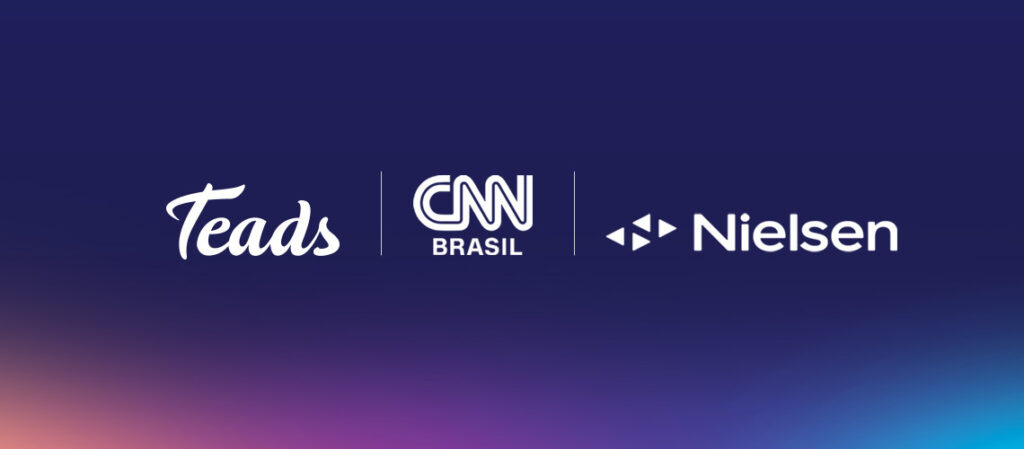Teads, in a partnership with CNN Brazil and using Nielsen’s research methods, has uncovered fresh perspectives on how ads and news articles can work together online and lead to less disruption for consumer’s experience.
The study, based out of Brazil, found a simple yet significant point: consumers prefer ads that fit smoothly into what they’re already reading. This means advertisements should blend in with the news content, making the whole experience feel united and less like an interruption.
These insight from Teads’ study suggests that when ads are thoughtfully placed and related to the content, readers are more likely to receive them well.
Read the press coverage in Advanced Television
Monika de Faria Lima Cerqueira, CO-MD of Teads in Brazil, encapsulates the study’s significance: “The findings of the study reinforce the importance of Artificial Intelligence models focused on customization and personalization for the evolution of experiences with advertising. However, positive perceptions of brands depend on their careful consideration of elementary factors. There are generational nuances in the relationship with digital advertising and a clear resentment, common to all groups, in relation to invasive ads, defined by respondents as disrespectful and harmful to reading content.”
Corroborating the survey, Sergio Maria, Vice President of Innovation and Digital at CNN Brazil, highlighted the respect for the audience as a major concern of the multiplatform brand. “As producers of journalistic content, we need to present it in a respectable and easy manner for a consumer who trusts our quality. The audience that comes to our page also appreciates the brands displayed in a more organic way, without having to stumble upon a clutter of pop-ups and invasive videos,” he explained.
Age emerges as a defining element in the receptivity to advertising. With 53% of participants citing credibility and 39% indicating quality of text and information as primary motivators for choosing news websites, it’s evident that younger consumers lean slightly towards the quality of texts, while older segments value credibility more.
Each age group interacts distinctly with advertising: The 16-22 demographic navigates it effortlessly; the 27-42 group accepts it cautiously, often seeing it as an interruption; while the 43-58 bracket is more critical, demanding value-aligned, non-invasive ad experiences.
Gender differences are pronounced, with women engaging deeply in content, discerning ad details, while men tend to scan until something catches their eye, often overlooking ads.
The daily commitment to news consumption is significant, with people investing up to two hours across 2-3 websites, underscoring the importance of these platforms in informing social dialogues.
The presence of advertising, while recognized as vital for the sustainability of news platforms, is contentious when excessive or poorly formatted. Pop-ups, in particular, draw ire for their disruptive nature, perceived as intrusive by readers across the board. Conversely, well-contextualized advertising diminishes the sense of interruption and is seen as considerate and of higher quality.
Monika underscores the potential for creating a virtuous cycle within the digital ecosystem: “Ensuring premium ads hosted in quality content and promoting respectful experiences with advertising, therefore aligned with the interests and expectations of consumers, establishes solid foundations of a virtuous cycle for all ecosystem agents – professional publishers, advertisers, agencies, and consumers. There are viable and accessible opportunities for this.”
The study’s overarching message is clear: advertising, when thoughtfully integrated and respectful of the consumer experience, can achieve a seamless blend with editorial content, enriching both the reader’s journey and the brand’s impact. This understanding paves the way for advertisers to cultivate engaged and attentive audiences, setting the stage for a sustainable and mutually beneficial presence on news media platforms.
To learn more about attracting and retaining high-attention audiences in premium and contextually relevant environments read more here.
.
More from Teads
Copyright 2024 - Made with in Montpellier
